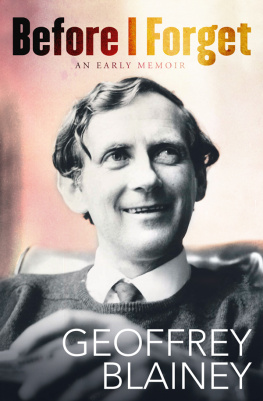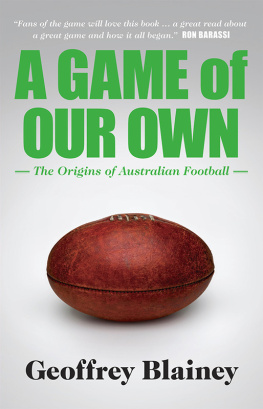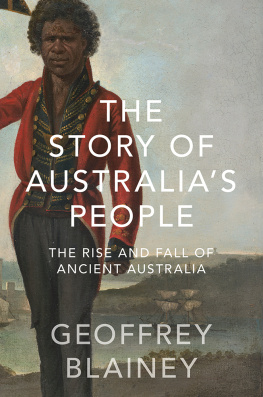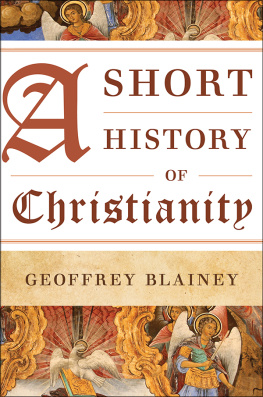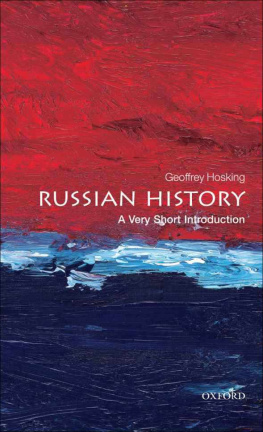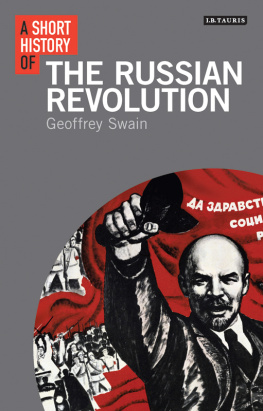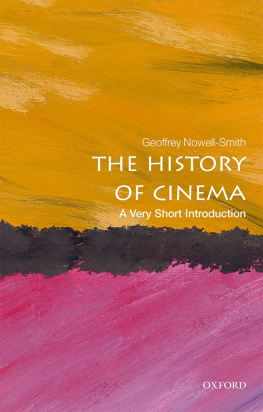Geoffrey Blainey - A Short History of the World
Here you can read online Geoffrey Blainey - A Short History of the World full text of the book (entire story) in english for free. Download pdf and epub, get meaning, cover and reviews about this ebook. year: 2002, publisher: Ivan R. Dee, genre: History. Description of the work, (preface) as well as reviews are available. Best literature library LitArk.com created for fans of good reading and offers a wide selection of genres:
Romance novel
Science fiction
Adventure
Detective
Science
History
Home and family
Prose
Art
Politics
Computer
Non-fiction
Religion
Business
Children
Humor
Choose a favorite category and find really read worthwhile books. Enjoy immersion in the world of imagination, feel the emotions of the characters or learn something new for yourself, make an fascinating discovery.

- Book:A Short History of the World
- Author:
- Publisher:Ivan R. Dee
- Genre:
- Year:2002
- Rating:5 / 5
- Favourites:Add to favourites
- Your mark:
- 100
- 1
- 2
- 3
- 4
- 5
A Short History of the World: summary, description and annotation
We offer to read an annotation, description, summary or preface (depends on what the author of the book "A Short History of the World" wrote himself). If you haven't found the necessary information about the book — write in the comments, we will try to find it.
A Short History of the World — read online for free the complete book (whole text) full work
Below is the text of the book, divided by pages. System saving the place of the last page read, allows you to conveniently read the book "A Short History of the World" online for free, without having to search again every time where you left off. Put a bookmark, and you can go to the page where you finished reading at any time.
Font size:
Interval:
Bookmark:
A SHORT HISTORY
OF THE WORLD
OF THE WORLD

GEOFFREY BLAINEY

A SHORT HISTORY OF THE WORLD. Copyright 2000, 2002
by Geoffrey Blainey. Maps copyright 2000 by Penguin Books Australia Ltd. All rights reserved, including the right to reproduce this book or portions thereof in any form. For information, address: Ivan R. Dee, Publisher, 1332 North Halsted Street, Chicago 60622. Manufactured in the United States of America and printed on acid-free paper.
First published by Penguin Books Australia Ltd., Victoria.
The paperback edition of this book carries the ISBN 1-56663-507-1.
Library of Congress Cataloging-in-Publication Data:
Blainey, Geoffrey.
A short history of the world / Geoffrey Blainey.
p. cm.
Originally published: Ringwood, Vic.: Viking, 2000.
ISBN 1-56663-421-0 (alk. paper) ISBN: 978-1-56663-507-3
1. World history. I. Title.
D23 .B48 2002
909dc2I
2001047623
THIS IS an attempt to write a world history that is not too voluminous. I try to survey human history since the time when the first people left Africa to settle the globe: my survey ends in AD 2000. Inevitably, some large themes I investigated are described so fleetingly that they are like glimpses from the window of a passing train.
I resolved from the outset that I would pay attention to technology and skills, for they have done so much to shape the world. Certain skills that now seem primitive to us were initially a breakthrough for the human race. Likewise I gave much attention to the rise of the major religions, for they too are attempts to reshape the world. I looked also at geographical factors, for they often ordained what could not happen, what could not succeed. I gave some space to what people ate and how hard they worked in order to earn their daily bread. When the book was far advanced, I realized what must have once been obvious to everyone: the intense power of the moon, stars and the night sky on human experience and on the ways in which the universe was seen. Chapter Four, The Dome of Night, and a section of the final chapter try to remedy that omission.
I found myself also looking at empires and the areas they covered. The size of the territory that one leader, or one state, can rule has grown progressively larger. For the first time in human history, world government of some sort is now possible: whether it is wise and whether it is wanted are other questions. Thus the shrinking of the world is one of the books recurring themes. In 1966 I completed an Australian book called The Tyranny of Distance, and I find that some of the themes of that book are still in my mind when I try to look at the whole world.
A history of the world is not a substitute for an encyclopedia. I was conscious, from an early stage, of the danger of making the book too compressed, of trying to pack in too much. I began to realize that I was leading the readers on a long journey, parts of which had to be made with speedotherwise the destination would never be reached. On the other hand, the journey occasionally had to be slowed down so that readers could look about them and savor a scene or milestone in the history of the human race. By design the book therefore is a mixture of fast movement and short periods of rest and meditation. Some of these pauses I wrote in advance, to ensure that they appeared at an appropriate place in the journey. Even though some of these leisurely episodes occupy perhaps more space than they deserve, they have their own value and symbolism. Among such episodes are the European man who died about 5,000 years ago and was recently found in the Alpine ice, still clothed and remarkably preserved; the way of life of the early Maoris of New Zealand; the influence of the Indian indigo plant on the color blue; the brides sacrificed in the rushing waters of the Yellow River in ancient China; Abraham Lincoln preparing to give his famous speech at Gettysburg; the strange death of the composer Tchaikovsky in tsarist Russia; and the signing of the peace on the deck of an American battleship in Tokyo harbor in 1945.
Europeans are mentioned little in some parts of the book. During the first dozen chapters, Europe rarely appears except as the home of the Greeks and the Romans. The continents of Africa, Asia and Asia Minor, and even the Americas, virtually dominate the story until it reaches the last 400 or 500 years when the European civilization has its turn at dominance. The United States and its very different kind of empirewhat I call the pale empire of ideasfalls within the last few seconds of human history if measured by the ticking of a 60-minute clock.
One of the dilemmas was how much space to allot to the last 150 years. Such influential leaders as Garibaldi, Franklin Roosevelt, Winston Churchill, and Nasser surely deserve a mention; and such profound or symbolic events as the invention of anesthetics surely call for at least one paragraph; but they receive scant or no attention in this book. Such ideologies as Darwinism, socialism, fascism, and Keynesianism deserve elaboration, especially if the world of today is to be understood, but they receive inadequate attention. My relatively cramped treatment of the 20th century stems from a reluctance to permit that century to be as significant, indeed as self-important, as every century seems to those who live in it. When the history of the world is written in AD 2400, so many resounding events of our time will have receded in relevance or entered oblivion, just as many of the events that were momentous in Roman or Aztec times no longer raise our eyebrows. So this is the tightrope I have tried to walk.
The books defects would have been larger but for the generous help and information I have received from many people. I especially thank Dr Jocelyn Chey of Sydney; Father Austin Cooper of the Catholic Theological College in Melbourne; Mr Raymond Flower of Sarnano, Italy; Dr Barry Jones, Peter Lawrence and Dr Malcolm Kennedy of Melbourne; Dr Glenn Mulligan and Dr Lotte Mulligan of La Trobe University; and Mr Kage-fumi Ueno, Japans consul general in Melbourne. Katie Purvis of Penguin Books has been a fine editor. My indebtedness to others is expressed in the source notes at the back of the book.
I gained from visits to many museums and art galleries as well as libraries. I especially thank the Deutsches Museum in Munich, the Museum of Natural History and the Science Museum in London, the American Museum of Natural History in New York, and the libraries of the Melbourne, Ballarat, and La Trobe universities in Australia.
This book was first published in October 2000, in Australia. For subsequent printings I made minor corrections and alterations. The preface to this edition has also been altered for the benefit of American readers.
G. B.
Melbourne, October 2001
OF THE WORLD
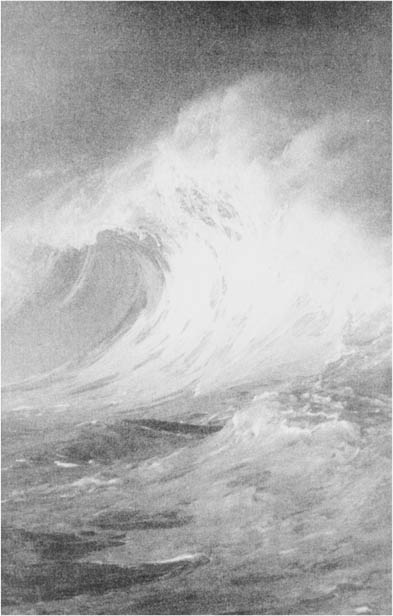

THEY LIVED in Africa and, two million years ago, they were few. They were almost human beings, though they tended to be smaller than their descendants who now inhabit the world. They walked upright; they were also skilled climbers.
Next pageFont size:
Interval:
Bookmark:
Similar books «A Short History of the World»
Look at similar books to A Short History of the World. We have selected literature similar in name and meaning in the hope of providing readers with more options to find new, interesting, not yet read works.
Discussion, reviews of the book A Short History of the World and just readers' own opinions. Leave your comments, write what you think about the work, its meaning or the main characters. Specify what exactly you liked and what you didn't like, and why you think so.


